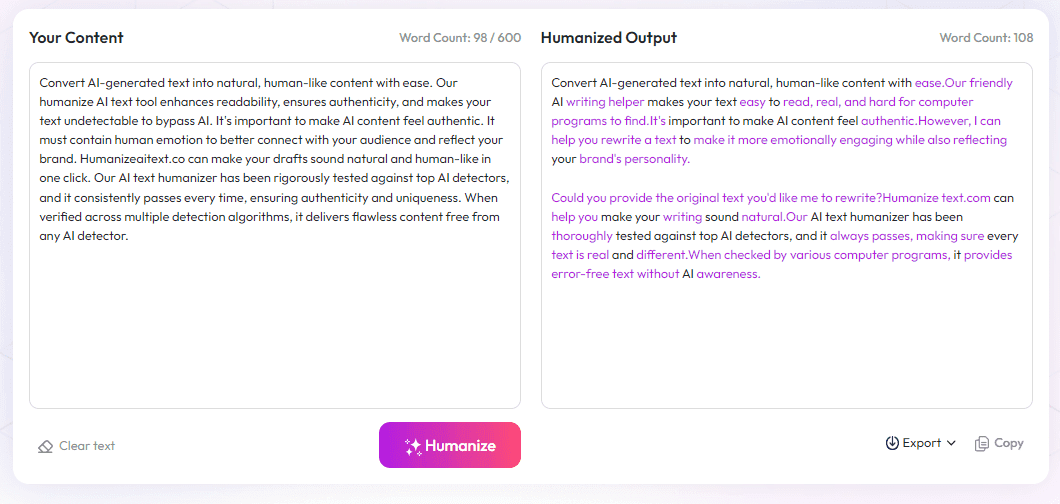Table of Contents
Struggling to create the perfect reader magnet? You're not alone—many people find it tricky to design something that really hooks their audience. But don’t worry, if you keep reading, I’ll show you a simple checklist to make the process easier and get results fast.
By following these straightforward steps, you'll learn how to plan, craft, and promote a magnet that your readers will love and actually use. Ready to boost your list? Let’s go through the key points together.
Key Takeaways
Key Takeaways
- Be clear about your main goal, whether it's growing your email list, promoting a product, or establishing authority. This guides your content and format choices.
- Select the best format for your audience, such as checklists, cheat sheets, or quizzes, based on what they prefer and what works best in your niche.
- Create content that provides real value—be direct and actionable. Organize it clearly with visuals to make it easy to use and understand.
- Use professional-looking designs with simple tools like Canva to make your magnet appealing and credible.
- Craft catchy titles and taglines that highlight the benefit or solve a problem to grab attention immediately.
- Build a focused landing page with a clear call-to-action and ensure the download process is smooth and easy to access.
- Promote your magnet across multiple channels like social media and your website, and automate delivery to streamline access for subscribers.
- Follow up with automated emails to nurture leads, share value, and introduce your products or services, turning visitors into customers.
- Track performance through analytics, see what works, and continually improve your magnet by testing different approaches.
- Gather feedback from your audience to refine your magnet and increase its effectiveness over time.
- Stay updated on new formats like interactive videos or AI quizzes, and experiment to keep your lead magnets fresh and engaging.

1. Define Your Goal for the Reader Magnet
Before you start creating any lead magnet, be crystal clear about what you want your audience to do next. Your goal might be to grow your email list, promote a product, or position yourself as an authority.
Think about what kind of value your audience needs most. Are they looking for tips, tools, or inspiration? Clearly defining your goal helps shape your content and ensures your magnet hits the mark.
For example, if your aim is to build an email list for a coaching business, offering a free comprehensive checklist or mini-guide related to your coaching niche can be highly effective.
2. Choose the Best Format for Your Audience
Not all lead magnets are created equal. The right format depends on what your audience prefers and what type of content you’re offering.
Common formats include checklists, cheat sheets, eBooks, templates, mini-courses, or interactive quizzes. According to recent stats, cheat sheets can have conversion rates up to 34%, and interactive quizzes can boost engagement by 70%.
For instance, if your followers love quick tips, a cheat sheet might perform better than a long eBook. On the other hand, industry-specific white papers are still top-tier for B2B leads, especially in professional services or finance sectors.
3. Create Useful and Clear Content
Your reader magnet needs to deliver real value. Avoid fluff—be direct and actionable. Provide solutions to real problems your audience faces.
Make sure your content is easy to understand and well-organized. Use bullet points, subheadings, and visuals to make things digestible. If you’re creating a checklist, ensure it’s comprehensive but simple enough to implement instantly.
For example, a productivity cheat sheet could include quick tips for time-blocking, recommended tools, and a printable daily planner all in one place.
4. Design Your Reader Magnet Professionally
First impressions matter. Use clean, professional-looking templates and visuals that match your brand. A well-designed magnet feels more credible and increases perceived value.
You don't need to be a graphic designer—tools like Canva or Adobe Spark can help you craft attractive layouts quickly.
Think about readability: choose legible fonts, balanced colors, and clear headings. For downloadable PDFs, make sure they look good on both desktops and mobile devices.
5. Write an Attention-Grabbing Title and Tagline
Your title is your first hook. It should immediately convey the benefit, intrigue, or solution your magnet offers.
Use numbers, action words, or questions to make it compelling. For instance, “10 Time-Saving Hacks for Busy Entrepreneurs” or “The Ultimate Cheat Sheet for Perfect Social Media Posts.”
Your tagline should complement the title and reinforce what the reader will gain. Keep it short, punchy, and relevant.
6. Set Up a Simple Download or Landing Page
You need a dedicated page where visitors can learn about your magnet and sign up. Keep the page focused—avoid clutter and distractions.
Highlight the main benefit, include an enticing image, and use a clear call-to-action (CTA) like “Download Now” or “Get Your Free Guide.”
Platforms like ConvertKit, Mailchimp, or Leadpages offer simple templates that make setup straightforward.
7. Make Your Reader Magnet Easy to Find and Access
Promotion is key. Share your magnet on your website, social media, and email signature. Use pop-ups, headers, or sidebar offers to get more eyes on it.
Ensure the download process is smooth—automate delivery via email or provide instant access after sign-up.
Link your opt-in forms to your email marketing platform, so new subscribers are added automatically.
8. Promote Your Reader Magnet Across Multiple Channels
Don’t rely on just one platform. Share your magnet through Instagram, Facebook, Pinterest, or LinkedIn depending on where your audience hangs out.
Use blog posts, guest podcasts, or collaborations to increase visibility. Consider running targeted ads if your budget allows, especially since even small investments can bring high returns—like the 82% conversion rates seen with coupon offers.
9. Build a System to Follow Up with Subscribers
Once someone downloads your magnet, follow up! Create a series of automated emails that nurture your new leads.
Share additional value, introduce your services, or invite feedback. Personalization—using their name or specific interests—can make your follow-up more effective and drive conversions.
10. Use Your Reader Magnet to Grow Your Email List and Sales
Your magnet isn't just for list building—use it as a stepping stone to promote your products or services.
Offer exclusive discounts or upsells within your follow-up emails. Well-crafted lead magnets can turn casual browsers into paying customers.
11. Test and Improve to Increase Results
Track your conversion rates—how many visitors sign up versus how many download your magnet.
Experiment with different headlines, formats, and promotion channels. The average landing page conversion is about 18%, but cheat sheets can reach up to 34%, and interactive content like quizzes can boost that figure significantly.
Regular tweaks based on data can help you create even more engaging and effective reader magnets over time.

12. Use Data and Industry Insights to Optimize Your Magnet
Incorporate relevant statistics and market data to make your lead magnet more convincing and tailored to your audience's needs.
For example, mentioning that cheat sheets can improve conversion rates up to 34% helps justify choosing that format.
Staying informed about your industry's trends—like the rising popularity of interactive quizzes—can help you develop more effective magnets.
Utilize insights from reports such as the average 18% landing page conversion rate or the 82% success rate for coupon offers to guide your strategy.
13. Automate Delivery and Set Up Effective Email Sequences
Once someone downloads your magnet, automation makes sure they receive it instantly and get entered into your nurturing sequence.
Set up email autoresponders that send the magnet immediately and follow up with additional value or offers.
Explore tools like **Mailchimp** or **ConvertKit** to create simple workflows that nurture your leads without extra effort.
Include personalized touches—like mentioning their name or interests—to increase engagement and boost conversions.
14. Track Performance Metrics and Set Up Analytics
Use analytics tools to monitor how many visitors see your lead magnet page, how many sign up, and how many actually download the content.
This data helps you identify bottlenecks and optimize your content or promotion efforts.
Aim for an average landing page conversion rate of around 18%, but aim higher with compelling offers like cheat sheets or quizzes.
Keep testing different headlines, formats, and promotion channels—small tweaks can lead to big improvements.
15. Incorporate Feedback and Iterate for Better Results
Ask your subscribers for feedback after they download your magnet to understand what resonated and what didn’t.
Use this insight to refine your content, design, and promotion strategies.
Small adjustments, like changing your title or adding new visuals, can significantly improve performance over time.
Consider running A/B tests on your landing pages or emails to see what version gets better engagement.
16. Stay Updated with New Trends and Formats in Lead Magnets
The digital landscape keeps evolving, and so do effective lead magnet strategies.
Keep an eye on emerging formats like interactive videos, AI-powered quizzes, or personalized calculators, which are projected to outperform traditional ebooks in 2025.
Experiment periodically with new ideas to see what truly resonates with your audience and boosts engagement.
Following industry leaders and attending relevant webinars can keep you ahead of the curve on innovative magnet strategies.
FAQs
Defining a clear goal helps focus your content, ensures it appeals to your target audience, and guides the design process to attract the right subscribers effectively.
Consider your audience's preferences, the type of information you want to share, and your skills. Formats like PDFs, checklists, or videos work well depending on your goals and audience needs.
Information should be relevant, concise, and easy to understand. Use clear language, organized layout, and focus on solving a problem or providing value for your target audience.
Share your magnet across social media, include it in your email signature, and collaborate with others in your niche to increase visibility and attract more subscribers.



